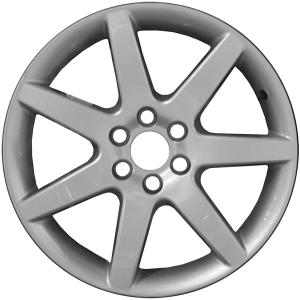Pretty much OT
IM sorry for asking this again, but how do you know EVERYTHING about cars?

Trivia: What can you distinguish from the lug nut amount in an early Mustang, and how?
I read a lot, I talk to a lot of fellow gearheads, I help people work on their cars, and most importantly I go to junkyards a lot so I can see how cars are put together and what parts they use. It doesn't hurt that I'm a quick study at most things.
In addition, I like to build up my own cars (usually Jaguars, but not always) and add features and capabilities that they didn't have when they left the factory. That means I end up doing a lot of research and learning extra stuff; for example, my Series III has now got a GM overdrive transmission installed where it didn't have OD before, an alternator from a GM ambulance, a Painless Wiring harness that I built myself, aftermarket wheels that were supposed to go on a Chevy Camaro and a bunch of other stuff snagged off other cars. and next year it's getting a Ford EDIS ignition system, MegaSquirt fuelling control, and a supercharger from a Mustang. All of this takes research and you learn things at the same time.
For example, here's the current build sheets on my Series III and Pathfinder:
http://www.dallasdrivers.org/spectre/vehicles/87xj6vdp/
http://www.dallasdrivers.org/spectre/vehicles/pathfinder/
Keep in mind that my Jaguar is the "toy" and the Pathfinder is attempting to stay close to stock (and as reliable as possible). Also, TFI Engineering is my entity for tax purposes - I get to write off my custom car modifications on my taxes if I call it a home business.

Finally, I have built at least two cars from the frame or unibody up (i.e., "Here's a couple of truckloads of parts and a chassis, have fun!") so I have a pretty good idea of how cars go together and how they should be built.
I don't know *everything* about cars, obviously, but I do know quite a bit. Now you know why. I probably would have gone into the automotive industry in some capacity if I.T. hadn't been more fun and more lucrative with less work.

I do try to keep my automotive skills current, though. :lol:
The Mustang thing is easy. If I recall correctly, when talking about factory configurations four lug Mustangs, right through the Fox-body cars, are six cylinder cars (or four in the Fox bodies, with the exception of the SVO). Only the V8s and the SVO got five lug wheels.







